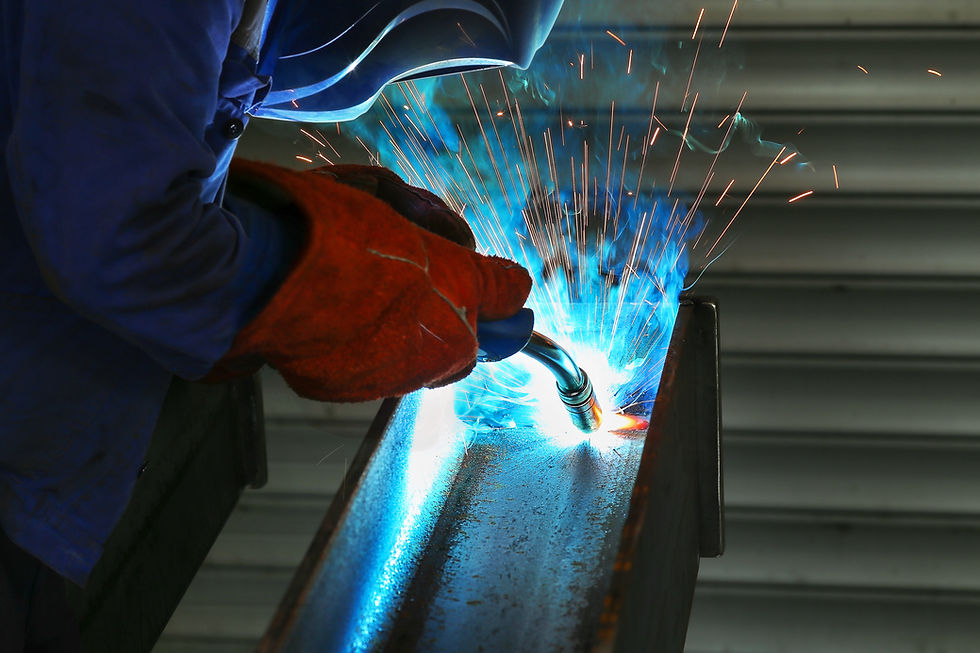Welding spatter is one of those inevitable nuisances that can quickly turn a neat welding job into a messy one. Spatter refers to the small molten metal droplets that are ejected during welding, typically caused by improper technique, equipment settings, or shielding gas issues. These tiny droplets cool down quickly and harden around the weld, making your work look sloppy and increasing cleanup time. Fortunately, there are ways to minimize and even avoid spatter altogether.
In this guide, we’ll go over key strategies for preventing welding spatter so you can produce clean, smooth welds without all the extra mess.
What Causes Welding Spatter?
Before we jump into prevention techniques, let’s understand what causes spatter in the first place. Several factors can contribute to spatter, including:
Incorrect voltage or amperage: Setting the machine too high or too low can cause spatter.
Improper shielding gas: The wrong type of gas or incorrect gas flow can lead to excessive spatter.
Wire speed issues: In MIG welding, incorrect wire feed speed can create spatter.
Dirty or contaminated workpieces: Rust, dirt, oil, or paint on the metal can interfere with the weld.
Poor welding technique: Holding the torch at the wrong angle or using improper travel speed can increase spatter. How to Avoid Spatter Around Welds?

1. Adjust Your Voltage and Amperage
How to Avoid Spatter Around Welds
One of the most common causes of spatter is incorrect voltage or amperage settings on your welding machine. When these settings are too high or too low, the arc becomes unstable, causing excess spatter.
Tips for Setting Voltage and Amperage:
For MIG Welding: If your voltage is too low, you’ll get a short arc with excess spatter. If it’s too high, you risk burn-through. Always follow the recommended voltage settings for the thickness of the material you're welding.
For Stick Welding: Set the amperage according to the electrode you’re using. Too much amperage will cause overheating and more spatter, while too little will result in a weak arc and poor penetration.
Make sure to fine-tune these settings based on your material and process to maintain a stable arc and minimize spatter.
2. Use the Correct Shielding Gas
In MIG welding, the choice of shielding gas plays a crucial role in controlling spatter. The gas shields the weld from contaminants in the air, and using the wrong type of gas or an improper flow rate can result in more spatter.
Best Shielding Gas Options to Reduce Spatter:
For Mild Steel: A mixture of argon and CO2 (typically 75% argon, 25% CO2) offers a balance of arc stability and spatter control. Pure CO2 produces more spatter but is cheaper, while argon-rich mixtures create smoother welds.
For Stainless Steel: Use a blend of argon, CO2, and oxygen. This combination ensures clean, strong welds with minimal spatter.
For Aluminum: Use pure argon for smooth welding with little spatter.
Tips for Gas Flow:
Ensure the flow rate is set correctly—too low and you won’t have enough shielding, but too high can cause turbulence, leading to spatter.
Use anti-spatter nozzles and keep your gas nozzles clean for consistent gas flow.
3. Optimize Wire Feed Speed (For MIG Welding)
In MIG welding, the wire feed speed controls how much filler metal is fed into the weld pool. Too high or too low of a wire speed can disrupt the arc, causing excess spatter.
How to Set the Right Wire Feed Speed:
Too Fast: If the wire speed is too fast, the wire will push into the weld pool, creating a popping sound and excessive spatter.
Too Slow: If the wire speed is too slow, it will cause the arc to become unstable, leading to spatter and poor penetration.
Pro Tip: Listen to the sound of the arc. A consistent, smooth humming sound usually indicates the correct wire speed, while popping or sputtering signals that adjustments are needed.
4. Maintain Clean Workpieces
A clean work surface is crucial for minimizing spatter. Contaminants like rust, paint, dirt, or oil on the metal can react with the weld, creating more spatter and causing poor weld quality. Cleaning your workpiece thoroughly before welding can significantly reduce spatter.
Steps to Clean the Workpiece:
Grind or brush off rust, paint, or mill scale before you begin welding.
Use a degreaser or solvent to remove any oil or grease from the metal.
If you’re working with heavily corroded metal, consider using a wire brush attachment or sanding disk to achieve a clean surface.
Pro Tip: Also, make sure your electrode and nozzle are clean. Spatter buildup on the nozzle can affect gas flow and cause more spatter.
5. Apply Anti-Spatter Spray
Anti-spatter sprays are designed to prevent molten metal from sticking to the workpiece or your equipment. Applying anti-spatter spray to the areas surrounding the weld (and sometimes on the welding nozzle) helps minimize post-weld cleanup and prevents spatter from sticking.
How to Use Anti-Spatter Spray:
Before welding, spray a light coat of anti-spatter spray on the area surrounding your weld joint.
You can also spray it on your welding torch’s nozzle to prevent spatter buildup that could interfere with shielding gas flow.
After welding, any spatter that lands on the sprayed areas will wipe off easily with a cloth.
Note: Be cautious not to overuse anti-spatter spray, as excess spray can affect weld quality.
6. Check Your Welding Technique
Your welding technique plays a big role in how much spatter you produce. Factors like the angle of the torch, travel speed, and distance from the weld pool all influence how clean or messy your welds will be.
Best Practices for Welding Technique:
Torch Angle: Maintain the correct torch angle (usually between 15-20 degrees) relative to the workpiece. Too much angle can increase spatter.
Stickout: Keep the correct distance between the nozzle and the workpiece, known as the "stickout." A short stickout (around 3/8 to 1/2 inch) helps maintain proper gas shielding and arc stability.
Travel Speed: If your travel speed is too fast, it will result in an unstable arc and excessive spatter. Move at a steady, consistent pace for cleaner welds.
Pro Tip: Practice on scrap metal to fine-tune your technique and reduce spatter.
7. Use the Right Welding Wire (For MIG)
The quality and size of the welding wire you use can also influence spatter levels. Low-quality wire or mismatched wire for your base material can cause erratic arc behavior and lead to more spatter.
Tips for Choosing the Right Wire:
Match the wire to the material you’re welding (e.g., ER70S-6 for mild steel).
Make sure the wire diameter is appropriate for the thickness of the material.
Use high-quality wire to avoid feeding issues that could contribute to spatter.

Conclusion: Cleaner Welds with Less Spatter
While some level of spatter is unavoidable, following these tips can significantly reduce spatter around your welds. By fine-tuning your settings, selecting the right shielding gas and wire, and maintaining clean work surfaces, you’ll produce smoother, more professional welds with minimal mess.
Next time you fire up your welding machine, keep these strategies in mind to avoid excessive spatter and minimize your post-weld cleanup time.



Comments